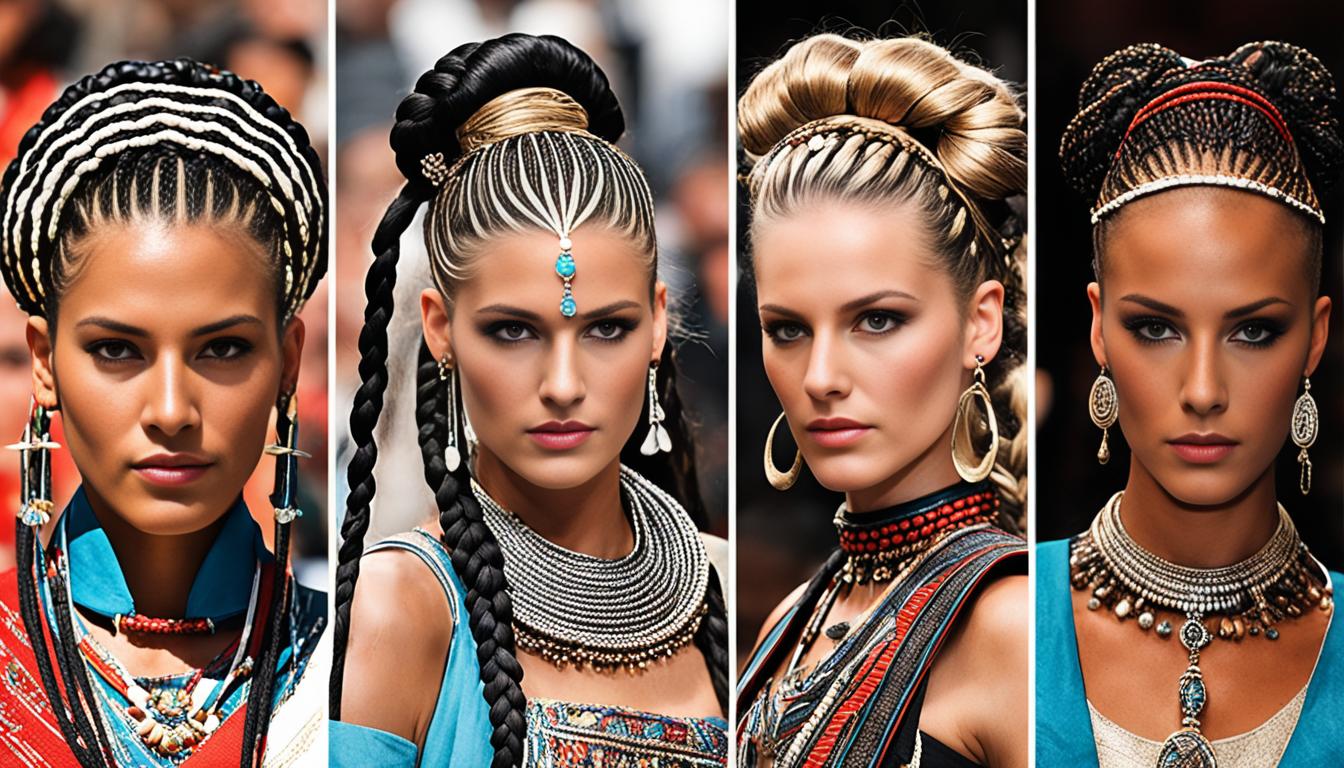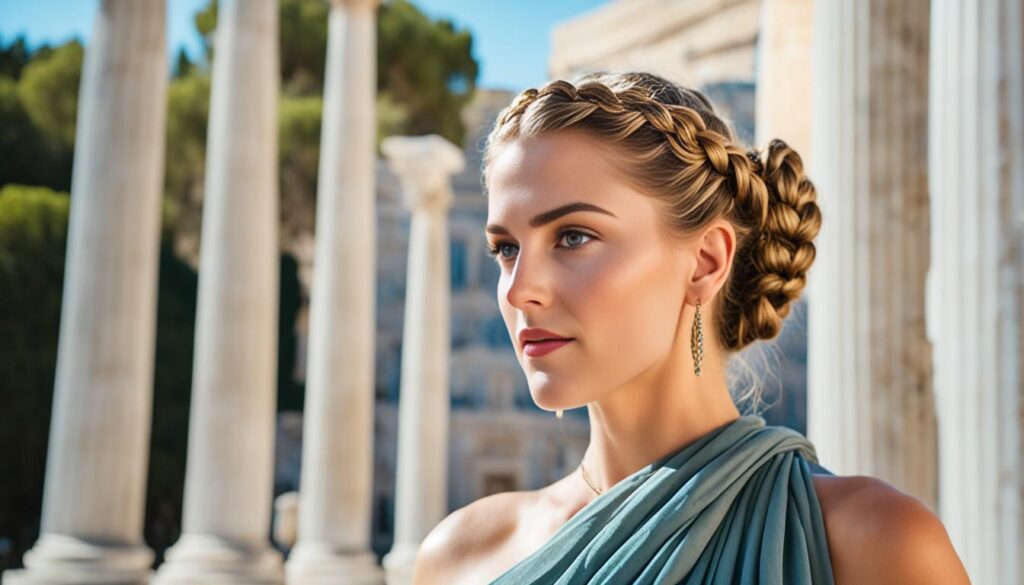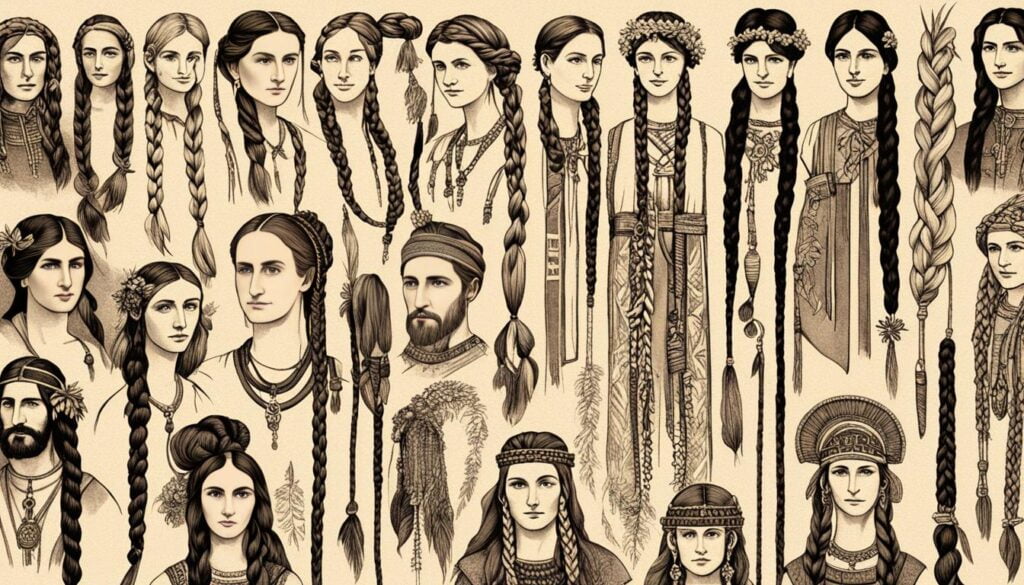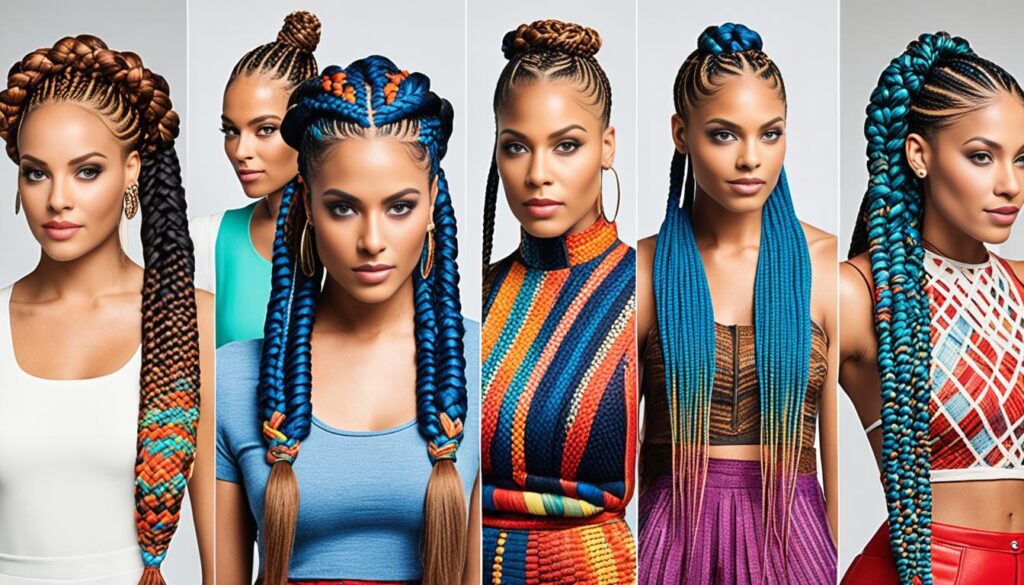
Braids have a deep historical and cultural significance that spans across different civilizations and continents. They have been embraced by various ethnic groups as a form of expression and artistry. Braiding techniques and styles have evolved over time, influenced by fashion trends and social changes. Ancient Egypt and African indigenous cultures, Greek and Roman civilizations, and Native American tribes are just a few examples of cultures that have embraced braids as part of their traditions.
Key Takeaways
- Braids are a timeless hairstyle found in various cultures worldwide.
- Ancient Egypt, Africa, Greece, Rome, and Native American tribes are among the cultures known for their braiding traditions.
- Braids have evolved and continue to be a popular hairstyle today, allowing individuals to express their creativity and cultural heritage.
- It’s important to appreciate and respect the cultural origins of braids, avoiding cultural appropriation.
- Braids are not just a hairstyle, but a powerful symbol of identity, history, and artistry.
The Ancient Origins of Braids
Braids have a fascinating history that dates back thousands of years, with their origins rooted in ancient civilizations. The art of braiding has been practiced by various cultures around the world, each with their unique traditions and styles.
One of the earliest records of braids can be found in ancient Egypt, where they were not only a fashionable hairstyle but also held deep symbolic meaning. Braids in ancient Egypt were worn by both men and women and served as a representation of social status and religious devotion. The intricate designs and patterns showcased the skill and artistry of the hairdressers who created them.
The African continent is believed to be the birthplace of braiding, with evidence dating back to 4,500 BC. Among the Himba people of Namibia, braids were not just a fashion statement but a way to convey a person’s age, marital status, and cultural heritage. Braiding techniques were passed down through generations, preserving the rich tradition of African braiding.
These ancient foundations laid the groundwork for the intricate and diverse braiding traditions that have persisted throughout history. From the majestic braided hairstyles of ancient Egypt to the culturally significant braids of Africa, this timeless art form continues to captivate and inspire.
Braids in Different Cultures
Braiding is not solely limited to ancient Egypt. Various cultures around the world have also embraced braids as popular hairstyles, each with its own unique techniques and styles. Let’s explore the braiding practices of different cultures, including Greek and Roman civilizations, Native American tribes, and traditional African communities.
Greek and Roman Braiding Styles
In both ancient Greek and Roman societies, braids were not only fashionable but also served practical purposes. Soldiers often wore braided hairstyles to keep their hair out of their faces during battles, ensuring clearer vision and minimizing distractions. Women, on the other hand, used braids to adorn their hair for special occasions, creating intricate patterns that showcased their style and creativity.
While ancient Greek braiding focused primarily on simplicity and elegance, Roman braiding incorporated more complex designs and accessories. Roman women commonly wore braided hairstyles adorned with jeweled hairpins and ribbons, further enhancing their overall appearance.
Native American Braiding Practices
The Native American tribes developed a rich tradition of braiding, which held deep cultural significance. Braiding varied among different tribes and served multiple purposes, such as communicating tribal affiliation, representing family lineage, and honoring individual achievements.
The intricate braiding patterns used by Native American tribes showcased their artistic skills and cultural heritage. Each tribe had its own distinct braiding techniques, with some incorporating beads, feathers, or other meaningful symbols into their hairstyles.
Traditional African Braids
Africa is known for its diverse range of intricate and symbolic braiding styles, each deeply rooted in local traditions and customs. Different tribes within Africa showcase their unique braiding techniques, with each style carrying its own cultural significance.
Braids in African communities are often a form of storytelling, conveying messages about social status, age, marital status, and even specific events or ceremonies. These braided hairstyles are crafted with skillful precision and attention to detail, making them both beautiful and deeply meaningful.
From the Himba people of Namibia to the Maasai tribe of Kenya, African braiding styles continue to inspire and captivate people around the world, showcasing the artistry and cultural richness of the continent.
| Culture | Braiding Styles |
|---|---|
| Greek and Roman | Soldier braids for practical purposes, intricate women’s hairstyles for special occasions |
| Native American | Unique braiding techniques to communicate tribal affiliation, family lineage, and individual achievements |
| African | Diverse range of braiding styles with cultural significance and symbolism |
These braiding practices from different cultures highlight the rich diversity and historical significance of this art form. Whether it’s the Greek and Roman braiding styles, Native American braiding practices, or traditional African braids, each culture has contributed its own unique flair to the world of braided hairstyles.

Evolution of Braids Throughout History
Braids have a fascinating history that spans across cultures and time periods. They have evolved and adapted to reflect changing fashion trends, social influences, and cultural practices. Let’s explore the journey of braids, from medieval Europe to modern times.
Braids in Medieval Europe
During medieval Europe, braids gained popularity among both men and women. They were adorned with ribbons, beads, and jewels to add elegance to the hairstyles. Queen Victoria’s love for braids further popularized them, making them a fashionable trend among the upper classes.
In this era, braids were not just a style choice but also a symbol of social status and refinement. Nobility and royalty often wore intricate braided hairstyles, showcasing their wealth and power.
| Braid Styles in Medieval Europe | Description |
|---|---|
| French Braid | An elegant and classic style that involves weaving the hair close to the scalp. |
| Fishtail Braid | A sophisticated braid that resembles the texture of a fishtail. |
| Dutch Braid | A reversed French braid, with the strands crossing under each other instead of over. |
Braids in Modern Times
In the 20th century, braids fell out of fashion in Western cultures, with other hairstyles taking the spotlight. However, braids continued to thrive in other parts of the world, especially in Africa and other regions with strong braiding traditions.
But in recent years, there has been a renaissance of braids in Western cultures. Social media platforms and popular culture have played a significant role in popularizing various braiding styles. Celebrities and influencers have showcased unique and creative braid designs, making them a trendy choice for individuals of all backgrounds.

Today, modern braiding techniques and styles encompass a wide range of options. From classic braids like French braids and fishtail braids to more intricate and avant-garde designs, there are endless possibilities for expressing your personal style.
Braids have come a long way throughout history, and their evolution showcases their timeless appeal. Whether as a fashion statement or a cultural expression, braids continue to captivate and inspire.+
The Contemporary Art of Braiding
Braiding has evolved beyond a simple hairstyle to become a dynamic art form. In today’s world, braids are embraced by people of all ages and cultural backgrounds. The art of braiding is not just about creating a hairstyle but also about expressing creativity and individual style. Different braiding techniques and styles have emerged, allowing people to create unique and personalized looks. Braiding continues to hold cultural significance, with many people using braids to express their heritage and identity.
Braids have become a contemporary trend, with new and innovative styles emerging regularly. From fishtail braids to Dutch braids, the possibilities are endless. People experiment with different patterns, textures, and accessories to create eye-catching and fashion-forward looks. Braids have become a way to stand out and make a style statement.
Contemporary Braiding Trends
Contemporary braiding trends reflect the ever-changing world of fashion and personal expression. Braids are not limited to traditional techniques but have evolved to incorporate modern twists. For example, braided updos are a popular choice for weddings and formal events, offering an elegant and sophisticated look.
Box braids, in particular, have gained popularity among people of African descent. These braids are created using hair extensions and can be styled in various lengths and thicknesses. Box braids give individuals the freedom to experiment with different colors and designs, allowing for endless creativity.
Cultural Significance of Braids
“Braids are not just a hairstyle but a powerful symbol of cultural heritage and identity. They connect us to our roots and serve as a reminder of our ancestors’ traditions and values.”
Braids have deep cultural significance across many communities and ethnicities. In African cultures, braiding has been used for centuries as a means of artistic expression, storytelling, and social identification. Different braiding styles signify important milestones, such as transitions into adulthood or marital status.
In Native American cultures, braids are a symbol of strength, unity, and spirituality. Specific braiding patterns are associated with different tribes and hold unique meanings.
Braids have transcended cultural boundaries and have been embraced by people worldwide. They serve as a way to honor and respect diverse cultures while celebrating the beauty and artistry of braiding traditions.
Modern Braiding Techniques
Modern braiding techniques have revolutionized the art of braiding, offering versatility and creativity. One popular technique is the French braid, which involves weaving sections of hair together to create an elegant and polished look.
The waterfall braid is another modern technique that creates a cascading effect, mimicking the appearance of a flowing waterfall. This style adds a touch of whimsy and femininity to any hairstyle.
The fishtail braid, with its intricate interwoven pattern, has also gained popularity in recent years. This style exudes a sophisticated and chic vibe, perfect for both casual and formal occasions.

Modern braiding techniques offer endless possibilities for individuals to express their style and personality. Whether it’s a simple braid or an elaborate updo, braids continue to captivate and inspire.
| Braid Style | Description |
|---|---|
| French Braid | A classic technique that involves weaving hair sections together. |
| Waterfall Braid | A technique that creates a cascading effect by letting some strands fall freely. |
| Fishtail Braid | An intricate style that resembles the appearance of a fishtail. |
Conclusion
Braids have stood the test of time as a timeless hairstyle that carries immense cultural significance. They have been passed down through generations, showcasing the rich history and traditions of various cultures around the world. From ancient Egypt to Native American tribes, braids have been embraced as a form of self-expression, artistry, and cultural heritage.
Choosing to wear braids is more than just a fashion statement; it is a way to connect with one’s roots, honor ancestral traditions, and celebrate diversity. However, it is crucial to approach braids with cultural appreciation rather than cultural appropriation.
By appreciating and respecting the cultural origins of braids, we ensure that we understand and honor the traditions behind them. It is important to avoid appropriating or diluting the significance of braids by understanding their historical and cultural context. By doing so, we can embrace the beauty and craftsmanship of braiding while promoting cultural exchange and understanding.
Ultimately, braids are not just a hairstyle but a powerful symbol of identity, history, and artistry. They allow us to express our individuality, creativity, and cultural heritage. So, whether you choose to wear braids as a fashion statement or as a tribute to your cultural roots, remember to do so with respect, appreciation, and a deep understanding of their cultural significance.






